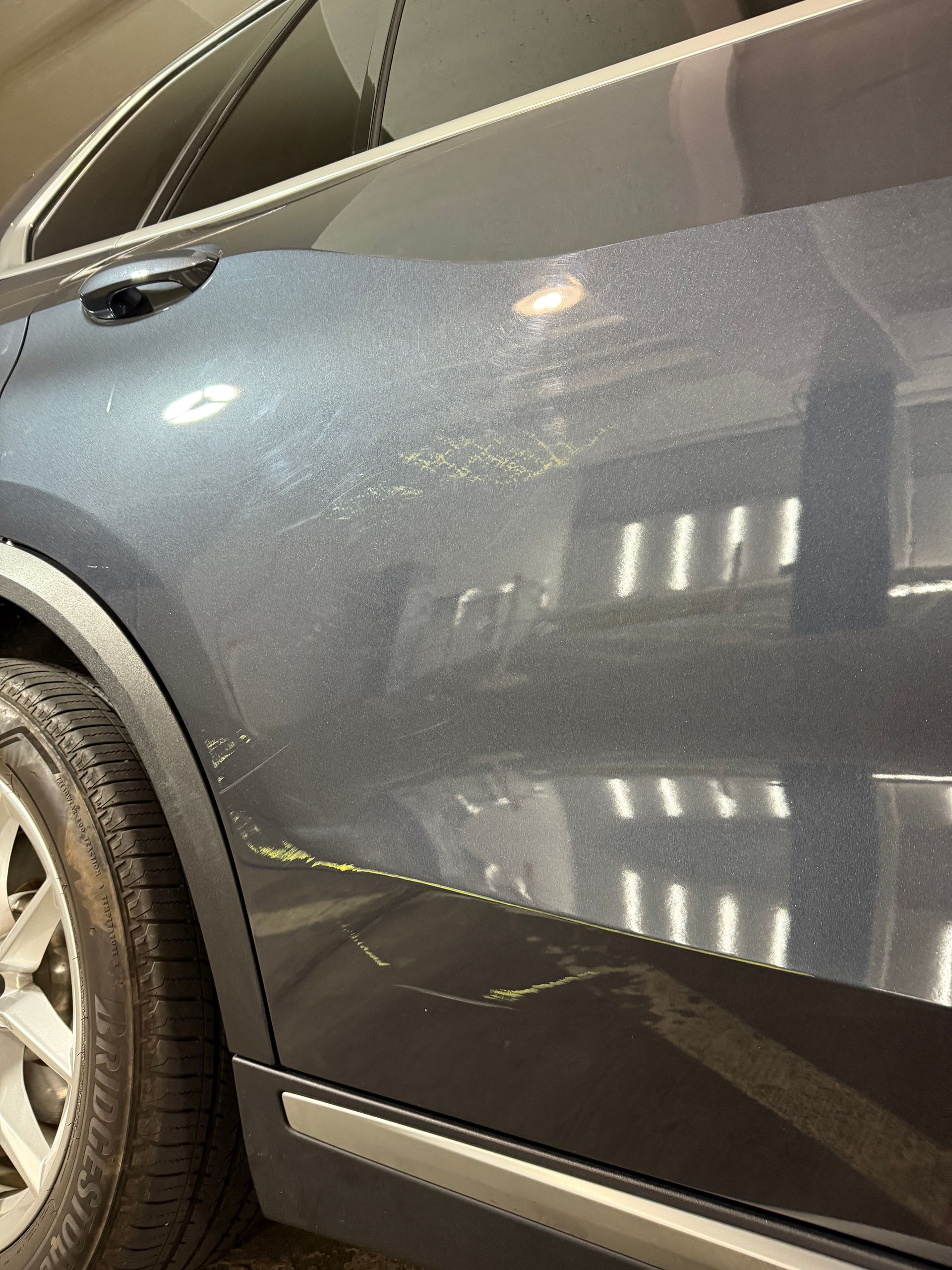How to Properly Store Your Summer Car for the Fall and Winter Months
westchesterdetailing
September 24, 2022

Properly preparing your vehicle for winter storage will ensure it stays in good running condition until spring. Follow these key maintenance steps before putting your car into storage for the winter months:
- Fill Up the Gas Tank
Top off your gas tank within 1 week of storage to minimize air exposure and prevent inside-tank condensation. Adding fuel stabilizer helps keep gas fresh for up to 2 years. - Check Fluid Levels
Refill windshield wiper fluid, coolant, brake fluid, and transmission fluid if needed 1-2 weeks before storage. Refer to your owner's manual for specifications. This prevents levels from dropping over the winter. - Inflate Tires
Fill tires to maximum recommended PSI 1 week prior to help prevent flat spots from forming while parked. Use a pressure gauge to check. - Clean and Charge Battery
Remove any corrosion and debris from battery terminals using a wire brush and baking soda solution. Fully charge the battery 1 day before storage to prepare it for cold temps. - Wash and Detail Thoroughly
Deep clean the exterior, tires, wheels, and interior 1 week before storage. This removes contaminants that can damage paint or upholstery over time. Pay attention to dust buildup on convertible tops. - Store in Cool, Dry Place
Keep your parked car in a garage or covered area maintaining 40-50°F to prevent exterior/interior damage from temperature swings. Lower convertible top windows slightly.


Acidic cleaners represent a critical category of professional detailing products, operating below pH 7 on the chemical scale. These specialized solutions play an essential role in modern detailing but require proper understanding and handling protocols. This guide provides comprehensive information for professional detailers and serious enthusiasts about the effective and safe use of acidic cleaning products. Understanding the Chemistry Professional-grade acidic cleaners function through specific chemical reactions that target inorganic contaminants. These products are particularly effective at: Dissolving mineral deposits Breaking down iron contamination Removing brake dust Treating oxidation Eliminating water spots Common Uses for Acid in Professional Detailing Wheel Cleaners Acid based wheel cleaners are a popular choice in car detailing because of their powerful ability to clean wheels and brakes. Acidic wheel cleaners are specifically formulated to tackle brake pad deposits, rust, and other stubborn contaminants found on rims and hubcaps. They commonly contain strong acids with a pH around 1 . Caution is advised when using acid on wheels. Improper use can result in severe damage to wheel finishes, particularly on polished, chrome, or aluminum surfaces. It’s important to keep an eye on dwell time of the chemical and to ensure that it is not being dried on the surface or kept in direct sunlight. These chemicals can damage paint and glass if not used properly. Fall Out Removers Fall out removers with a neutral pH are normally recommended for ongoing paint and wheel maintenance. While they are less aggressive than acidic cleaners, they offer similar benefits when decontaminating wheels and paint with less risks of degradation of surfaces or misuse. Gentle acidic products like Crystal Wash by P&S can be used for removing inorganic contaminants like metal filings and rust, while also addressing limescale and water spots on windows and paint surfaces. Benefits of Using Acidic Chemicals When Detailing Acids are effective in removing mineral deposits, like water spotting, rust and other inorganic residues. Most water spot removal chemicals are a form of a gentle acid capable of breaking down calcium and salt deposits that occur during the winter. When using a water spot remover, we always recommend following the instructions on the chemical. Wash the panel off after use of the chemical to ensure there are no residues left over. A variety of shampoos designed for unclogging ceramic coatings sit at a pH slightly below 7. Using acids in turn requires less agitation for a deeper clean of wheels or a ceramic coating, preserving the surface, avoiding scratches or premature aging of the materials. Potential Risks of Using Acids on Cars While acidic chemicals offer numerous benefits for car detailing, using these chemicals requires caution. Acidic cleaners can harm vehicle finishes, especially if they come into contact with paint or anodized aluminum surfaces. Some acidic products contain hazardous substances that can pose serious health risks, such as skin irritation or respiratory issues, necessitating the use of protective equipment during application. Protective gear, such as gloves and goggles, should always be worn to safeguard against splashes, and it is advisable to conduct a spot test on inconspicuous areas to ensure compatibility with the surface being cleaned.

Parking garages can be challenging environments for your vehicle, with tight spaces, low ceilings, and the risk of accidental damage. Whether it's a minor scratch or a more significant dent, knowing how to assess and address the damage is crucial. This article will guide you through identifying common types of damage, understanding when professional help is needed, and learning how to prevent future incidents. Common Types of Damage in Parking Garages 1. Scratches: These are often caused by other vehicles brushing against your car. Scratches can range from superficial to deep, potentially affecting the paint or even the metal beneath. 2. Dents: Dents occur when another vehicle collides with your car, often during parking maneuvers. These can vary in severity, from small dents to more extensive damage. 3. Paint Transfer: This happens when another car's paint transfers onto your vehicle, usually due to a minor scrape or bump. While not as severe as other types of damage, it can still be unsightly. Assessing the Damage If your car is damaged in a parking garage, the first step is to assess the extent of the damage. Here's how to do it: Check for Paint Transfer: If you notice a different color on your bumper or another part of your car, it could be paint transfer. This is often a sign of a minor scrape. Inspect for Scratches: Run your hand over the affected area to feel for scratches. If the paint is rough or uneven, it may require touch-up. Look for Dents: Examine the body of your car for any dents or depressions. These can be a sign of a more significant impact. Check for Primer or Plastic Exposure: If the damage has exposed the primer or the underlying plastic, it indicates more severe damage that likely requires professional repair. When to Seek Professional Help Exposed Primer or Plastic: If the paint has been removed and the primer or plastic is visible, a professional touch-up or respray is necessary. Severe Scratches or Dents: Deep scratches or large dents should be addressed by a professional to prevent further damage or rust. Uncertain Damage: If you're unsure about the extent of the damage, it's always safer to consult a professional. Repairing Parking Garage Damage 1. Paint Touch-Up: For minor paint transfer or scratches, a paint pen can be used to touch up the affected area. Ensure you use a color that matches your car's paint. Follow these steps: - Clean the area thoroughly. - Lightly sand the edges of the damage to blend the paint. - Apply the touch-up paint in thin layers. - Allow each layer to dry before applying the next. - Finish with a clear coat if necessary. 2. Paint Correction and Polishing: For lighter scratches, paint correction using fine abrasive materials can smooth out the surface. Polishing will then restore the shine. 3. Dent Repair: Depending on the severity, dents can be repaired using paintless dent repair (PDR) for minor dents or traditional body work for more significant damage. Preventing Damage in Parking Garages To minimize the risk of damage, consider the following tips: Park Strategically: Choose a spot that offers enough space to maneuver without risking contact with other vehicles. Avoid Tight Spaces: If the space is too tight, it's better to find another spot to park. Use Sensors: If your car has parking sensors, rely on them to help judge distances accurately. Be Cautious When Backing Out: Take your time and check your surroundings before reversing. Consider Protective Covers: Using protective covers can add an extra layer of defense against minor scratches and dents. Insurance and Legal Considerations If the damage was caused by another driver, consider filing a claim with your insurance company. Document the incident with photos and contact information from the other party. If the parking garage management is responsible, they may have liability insurance to cover the damage. Dealing with parking garage damage can be frustrating, but with the right knowledge and approach, you can address the issue effectively. By assessing the damage accurately, knowing when to seek professional help, and taking preventive measures, you can protect your vehicle and maintain its appearance. Remember, a proactive approach can save you time, money, and hassle in the long run.

Detonation nanodiamonds (DNDs) are more than just a scientific curiosity—they’re a groundbreaking material with the potential to transform industries ranging from automotive coatings to biomedicine . Born from controlled explosions , these tiny diamond crystals are reshaping how we think about durability, performance, and innovation. In this article, we’ll dive deep into the science, history, and applications of DNDs, offering a complete resource for anyone interested in this fascinating field. What Are Detonation Nanodiamonds? The Basics of DNDs Detonation nanodiamonds are tiny diamond particles, typically 3–5 nanometers in size, created by detonating explosives with a negative oxygen balance, like as a mixture of trinitrotoluene (TNT) and hexogen (RDX)in a controlled environment . The carbon atoms in the explosives rearrange into a diamond’s signature sp³ carbon lattice structure , giving DNDs their exceptional hardness and durability. Despite their small size, these particles pack a punch, offering unique properties that make them invaluable in a variety of applications.





